Integrate Harbor With Tekton Pipelines
Harbor is an advanced, open-source cloud-native registry that securely manages container images and Helm charts, and also supports a wide range of OCI artifacts. It enforces policies and role-based access control, while ensuring all managed content, including container images and other artifacts, are scanned and certified free from vulnerabilities. For those looking to integrate Harbor into their workflow, the documentation provides comprehensive steps on creating projects and establishing robot accounts. These accounts facilitate automated and secure interactions with the registry, crucial for CI pipelines and enhancing overall security and efficiency in artifact management.
Overview
Harbor integration with Tekton enables the centralized storage of container images within the cluster, eliminating the need for external services. By leveraging Harbor as the container registry, users can manage and store their automation results and reports in one place.
Integration Procedure
The integration process involves two steps:
-
Creating a project to store application images.
-
Creating two service accounts (robot account) with different permissions to push (read/write) and pull (read-only) project images.
Create New Project
The process of creating new projects is the following:
-
Log in to the Harbor console using your credentials.
-
Navigate to the Projects menu, click the New Project button:
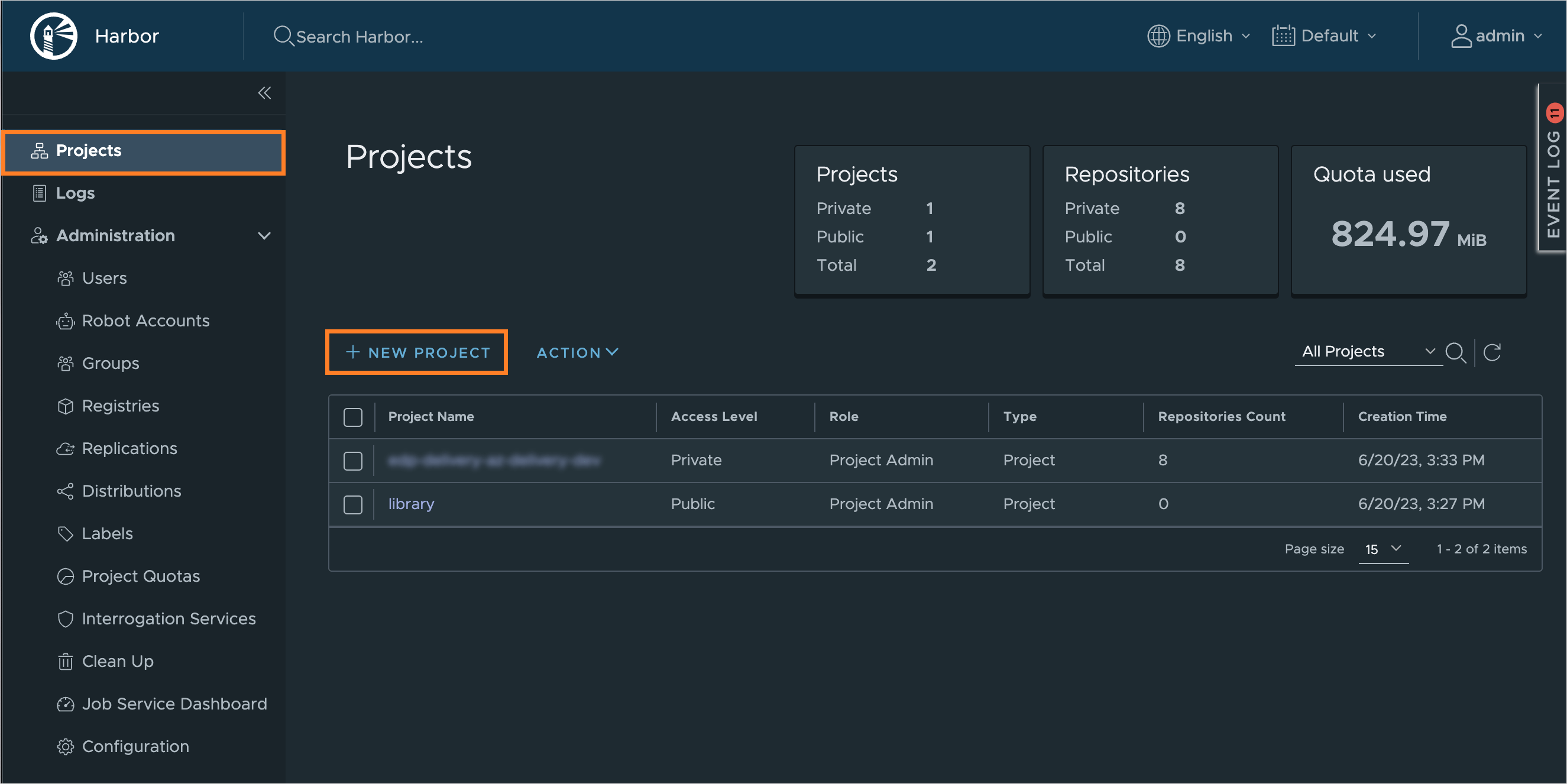
-
On the New Project menu, enter a project name that matches your platform namespace in the Project Name field. Keep other fields as default and click OK to continue:
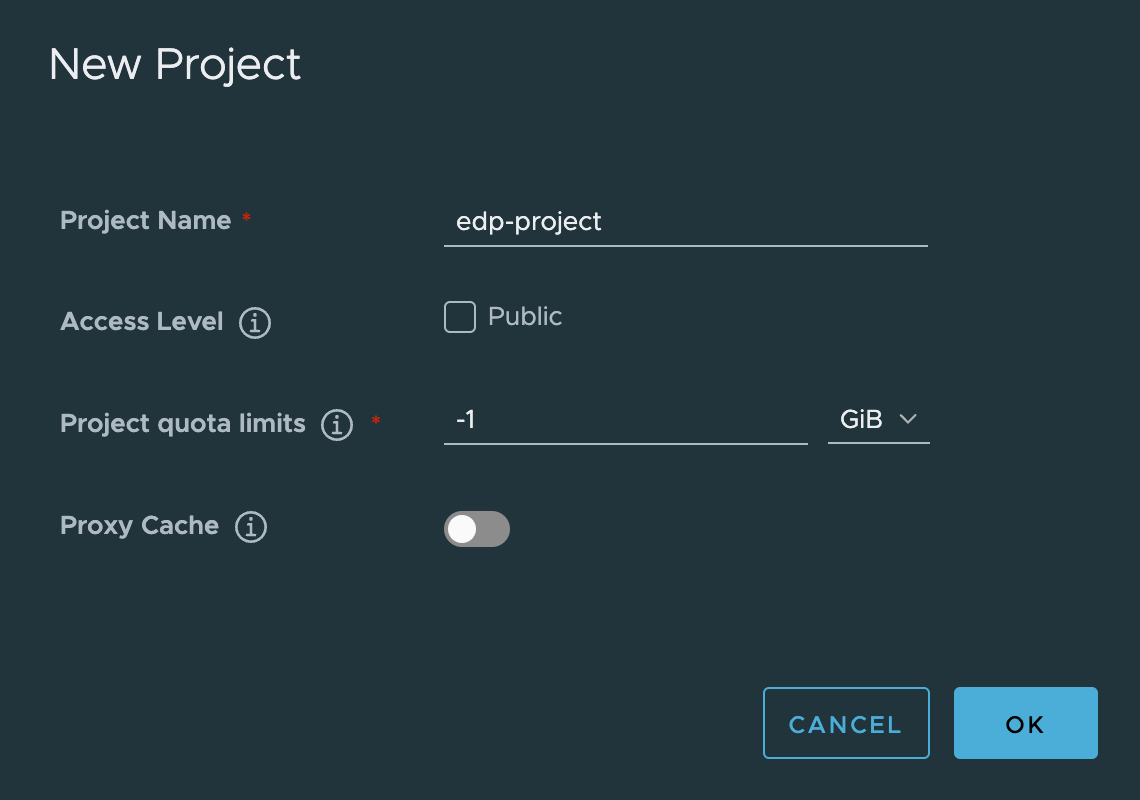
Set Up Robot Account
To facilitate seamless interaction between KubeRocketCI and a Harbor project, it is crucial to establish a robot account. This process involves:
-
Navigate to your newly created project, select Robot Accounts menu and choose New Robot Account:

-
In the pop-up window, fill in the fields as follows:
- Name -
edp-push; - Expiration time - set the value which is aligned with your organization policy;
- Description -
read/write permissions; - Permissions -
Pull RepositoryandPush Repository.
To proceed, click the ADD button:
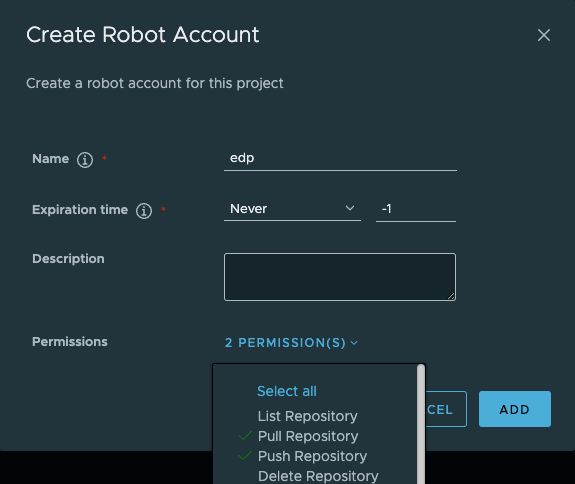
- Name -
-
In the appeared window, copy the robot account credentials or click the Export to file button to save the secret and account name locally:
-
Provision the kaniko-docker-config secrets using kubectl, KubeRocketCI portal or with the externalSecrets operator:
The
authstring can be generated by this command:echo -n "robot\$edp-project+edp:secret" | base64- UI Portal
- Manifests
- External Secrets Operator
Navigate to Portal -> Configuration -> ARTIFACTS STORAGE -> Registry. Update or click + ADD INTEGRATION fill in the required fields and click
Save.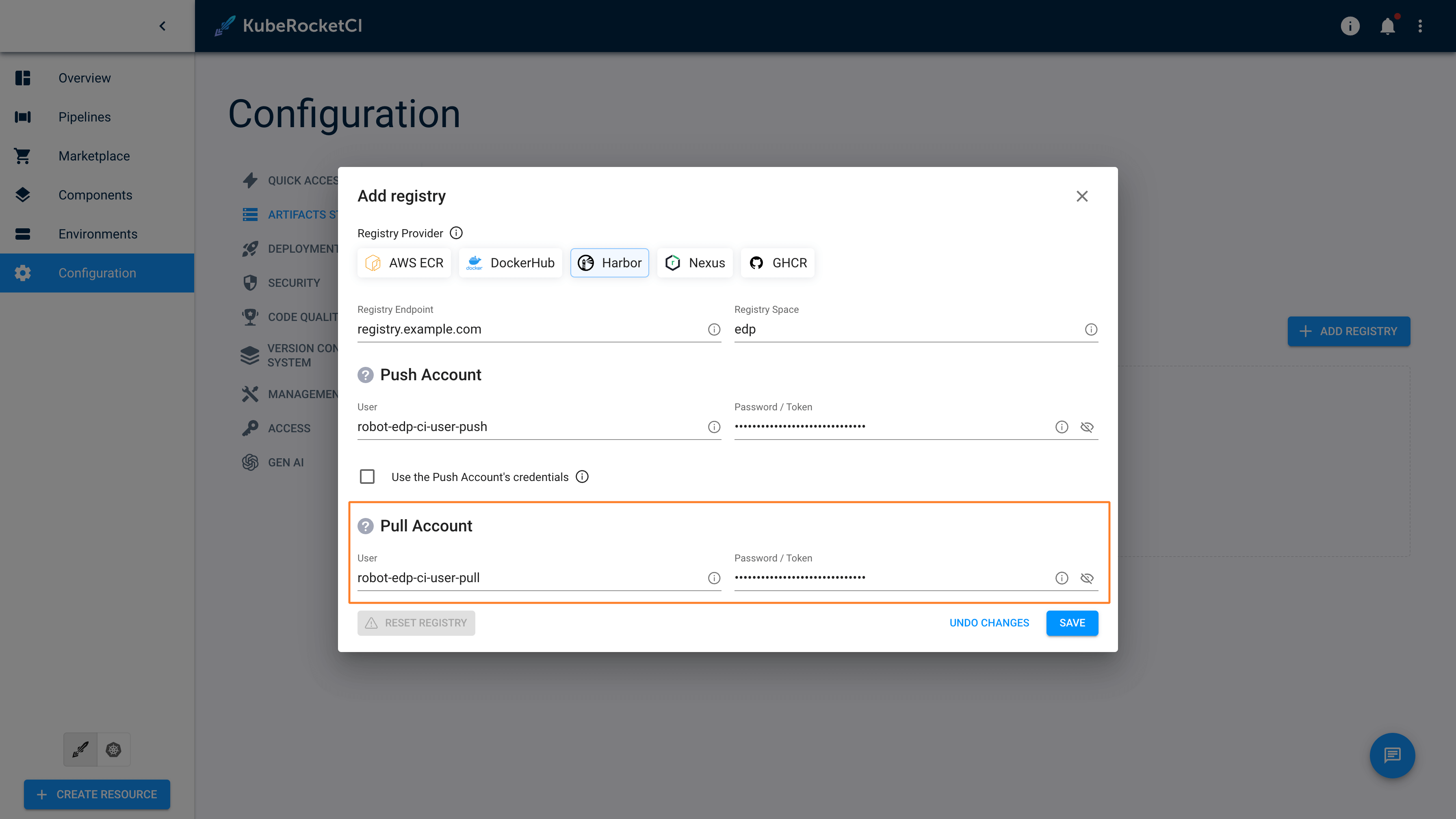
apiVersion: v1
kind: Secret
metadata:
name: kaniko-docker-config
namespace: krci
labels:
app.edp.epam.com/secret-type: registry
app.edp.epam.com/integration-secret: "true"
type: kubernetes.io/dockerconfigjson
stringData:
.dockerconfigjson: |
{
"auths" : {
"harbor-registry.com":
{
"username":"registry-username",
"password":"registry-password",
"auth": "secret-string"
}
}
}"kaniko-docker-config":
{"auths" : "harbor-registry.com":
{
"username":"registry-username",
"password":"registry-password",
"auth": "secret-string"
}
}Navigate to Portal -> Configuration -> ARTIFACTS STORAGE -> Registry. Here, you will observe the
Managed by ExternalSecretmessage: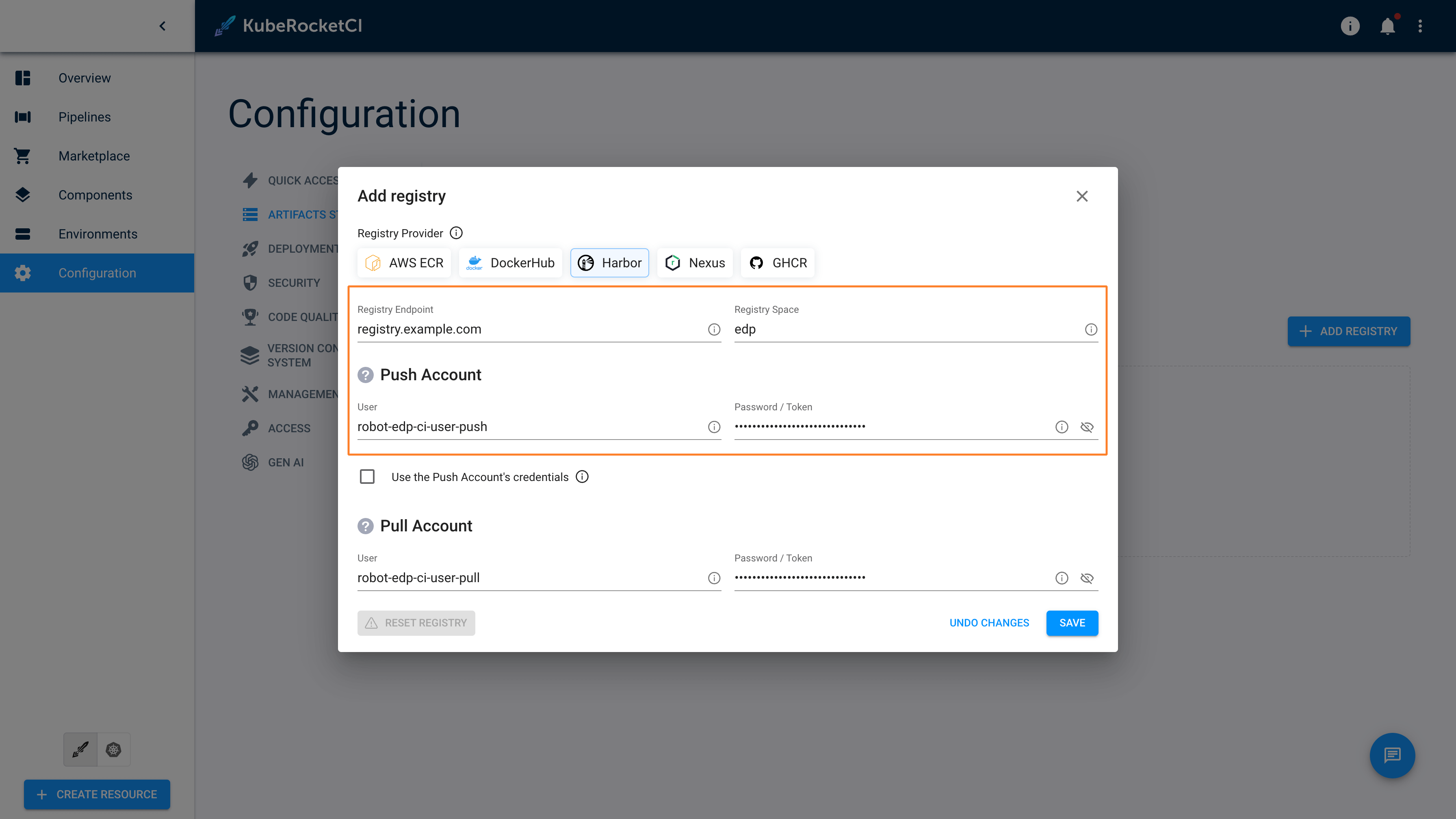 note
noteMore details of External Secrets Operator Integration can be found in the External Secrets Operator Integration page.
-
Repeat steps 2-3 with values below:
- Name -
edp-pull; - Expiration time - set the value which is aligned with your organization policy;
- Description -
read-only permissions; - Permissions -
Pull Repository.
- Name -
-
Provision the regcred secrets using kubectl, KubeRocketCI portal or with the externalSecrets operator:
The
authstring can be generated by this command:echo -n "robot\$edp-project+edp-push:secret" | base64- UI Portal
- Manifests
- External Secrets Operator
Navigate to Portal -> Configuration -> ARTIFACTS STORAGE -> Registry. Update or click + ADD INTEGRATION fill in the required fields and click
Save.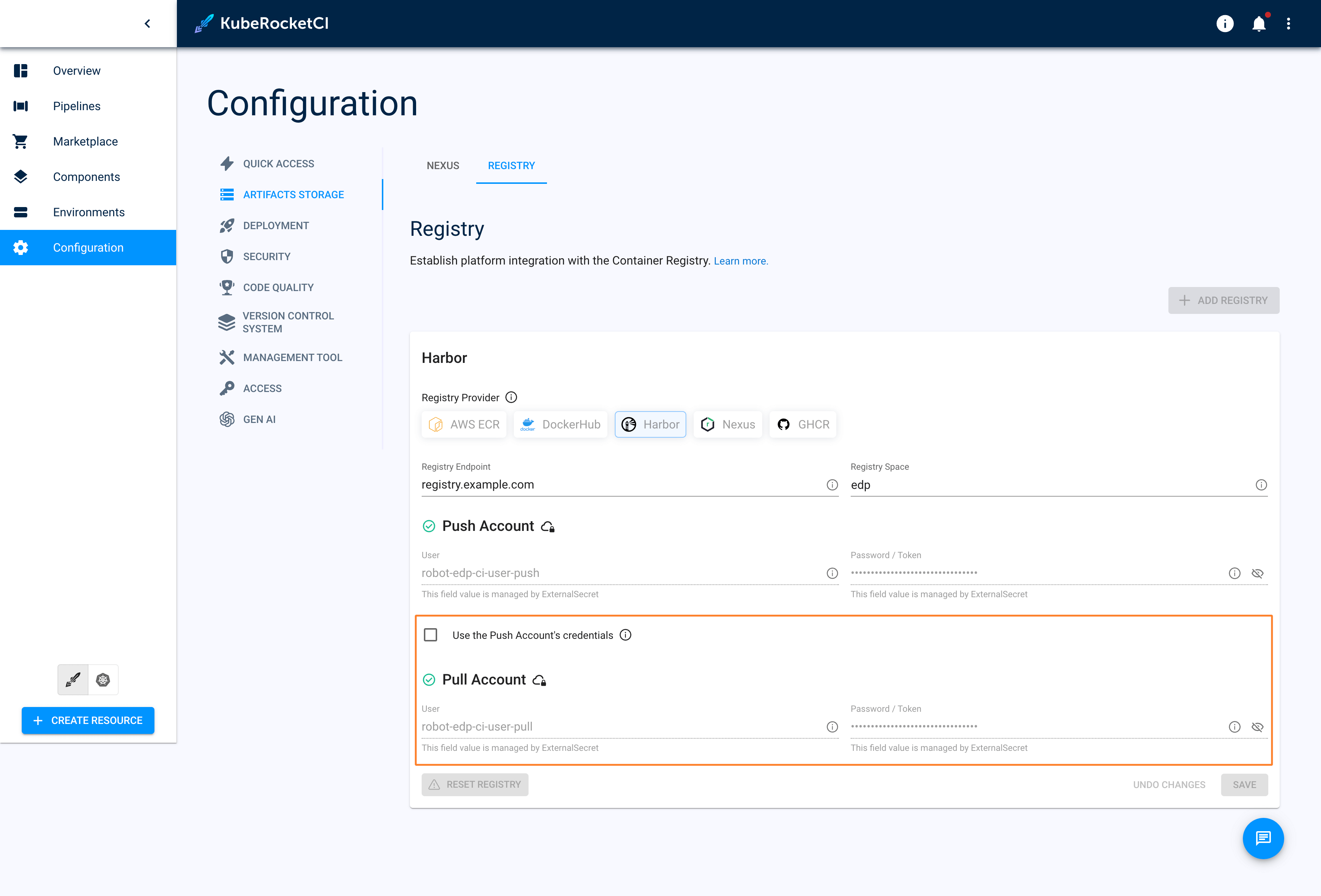
apiVersion: v1
kind: Secret
metadata:
name: regcred
namespace: krci
labels:
app.edp.epam.com/secret-type: registry
app.edp.epam.com/integration-secret: "true"
type: kubernetes.io/dockerconfigjson
stringData:
.dockerconfigjson: |
{
"auths" : {
"harbor-registry.com":
{
"username":"registry-username",
"password":"registry-password",
"auth": "secret-string"
}
}
}"regcred":
{"auths" : "harbor-registry.com":
{
"username":"registry-username",
"password":"registry-password",
"auth": "secret-string"
}
}Navigate to Portal -> Configuration -> ARTIFACTS STORAGE -> Registry. Here, you will observe the
Managed by ExternalSecretmessage: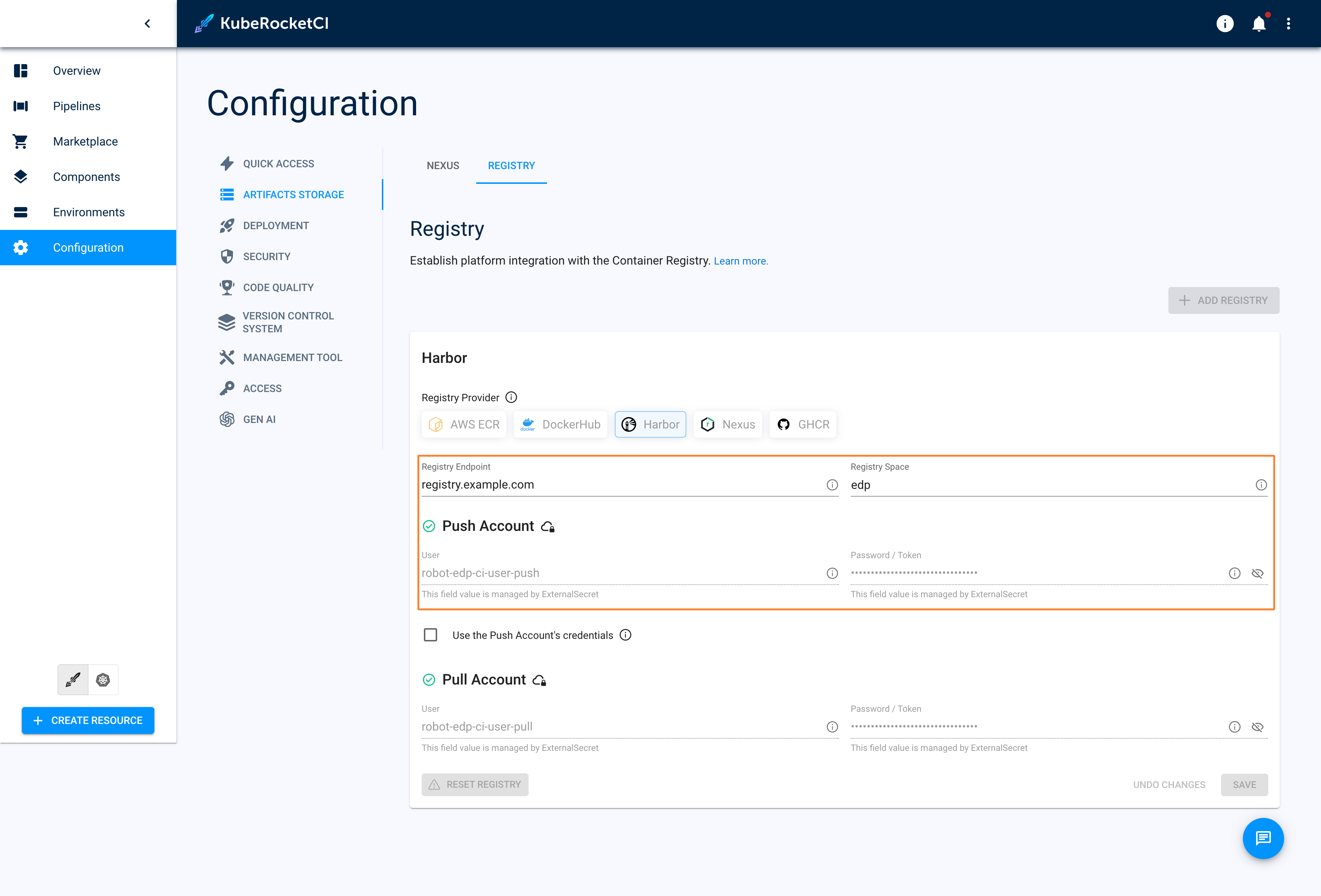 note
noteMore details of External Secrets Operator Integration can be found in the External Secrets Operator Integration page.
-
In the values.yaml file for the edp-install Helm chart, set the following values for the specified fields:
- Manifests
- External Secrets Operator
If the
kaniko-docker-configsecret has been created manually:values.yaml...
kaniko:
existingDockerConfig: "kaniko-docker-config"
global:
dockerRegistry:
url: harbor-registry.com
type: "harbor"
...If the
kaniko-docker-configsecret has been created via External Secrets Operator:values.yaml...
kaniko:
existingDockerConfig: "kaniko-docker-config"
externalSecrets:
enabled: true
global:
dockerRegistry:
url: harbor-registry.com
type: "harbor"
... -
(Optional) If you've already deployed the edp-install Helm chart, you can update it using the following command:
helm update --install krci epamedp/edp-install \
--values values.yaml \
--namespace krci
As a result, application images built in UI Portal will be stored in Harbor project and will be deployed from the harbor registry.
Harbor projects can be added and retained with a retention policy generated through the script in edp-cluster-add-ons.